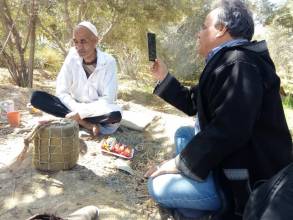
La Oficina de la UNESCO en El Cairo publica la publicación ‘Fortalecimiento de las capacidades nacionales para el inventario del patrimonio cultural inmaterial en la República Árabe de Egipto’
Read more
Bienvenidos al Centro de Información de la UNESCO sobre patrimonio vivo y educación. A través de esta plataforma, podrá consultar documentos, estudios de casos e informes sobre los múltiples beneficios de la integración del patrimonio cultural inmaterial en la educación formal y no informal. Más información


La Oficina de la UNESCO en El Cairo publica la publicación ‘Fortalecimiento de las capacidades nacionales para el inventario del patrimonio cultural inmaterial en la República Árabe de Egipto’
Read more

‘Teaching and learning with living heritage in Ukraine’ is a pilot project implemented with the support of the UNESCO Heritage Emergency Fund.
Read more
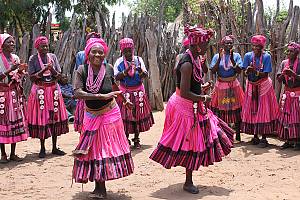
‘Safeguarding Intangible Cultural Heritage in basic education in Namibia and Zimbabwe’ is a project implemented with the support of the Government of Flanders, Belgium.
Read more

El 25 de marzo, la Oficina de la UNESCO en Bangkok y el International Information and Networking Centre for Intangible Cultural Heritage in the Asia-Pacific Region under the auspices of UNESCO (ICHCAP) organizan un evento en línea titulado “Llevar el patrimonio vivo al aula en Asia-Pacífico para promover una educación transformadora”, que se celebrará en el contexto del Foro Asia-Pacífico 2022 para el Desarrollo Sostenible (28 - 31 de marzo). Reserve la fecha y regístrese ahora.
Read more

Para celebrar el 15.o aniversario de la ratificación de la Convención de 2003 por parte de Eslovaquia, el Centro Eslovaco para el Patrimonio Cultural Inmaterial en cooperación con el Instituto Nacional de Cultura y Folclore en Strážnice (Chequia) organizarán un webinario dirigido a docentes de lengua checa y eslovaca el __24 de septiembre de 2021 de 9:00 a 13:00_.
Read more

The first global Online training of trainers course on living heritage and education ended recently. The Living Heritage Entity takes this opportunity to highlight the beneficial relationship between living heritage safeguarding and education.
Read more
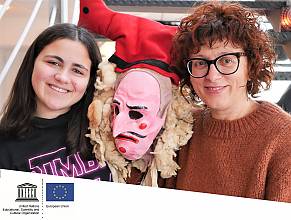
A webinar on ‘Teaching and learning with living heritage’ will allow European teachers and students to share their experience on 29 June 2021 from 3 to 5 p.m. (Paris time).
This event concludes the project ‘Engaging Youth for an Inclusive and Sustainable Europe’ implemented jointly by UNESCO and the European Union to raise awareness about the benefits and challenges of teaching and learning with living heritage in primary and secondary schools. Register to follow the event!
Read more
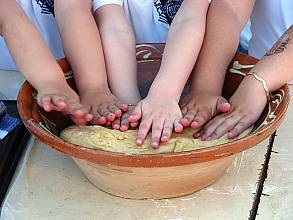
From 31 May to 4 June 2021, the Global ASPnet meeting will bring together teacher education and training institutions represented by deans, teacher educators and student teachers from the UNESCO Associated Schools Network (ASPnet). Tomorrow, an online session dedicated to Living heritage as an enabling force for transformative education is taking place. It aims at highlighting the importance of bringing together safeguarding living heritage and education in achieving Sustainable Development Goal 4 (SDG 4) on quality education. 13 teachers from Asia, Middle East and Europe will share their inspiring insights. Do not miss this great opportunity to learn from experiences on the ground!
Read more

UNESCO welcomes young heritage professionals, students and heritage enthusiasts to join the upcoming open Webinar on European Youth and Heritage being held on 23 April 2021 from 14:00 to 15:30 Paris time, and discover a thriving network of Cultural Heritage Messengers. Online registration here.
Read more
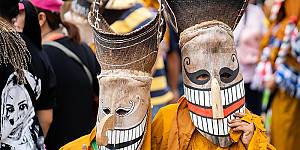
The UNESCO Bangkok Field Office and the International Information and Networking Centre for Intangible Cultural Heritage (ICHCAP) have jointly published the results of a recent survey on ‘Teaching and learning with and about intangible cultural heritage in Asia and the Pacific’, which provides an overview of different tools for teachers to integrate ICH in schools and several case studies from Asia and the Pacific.
Read more
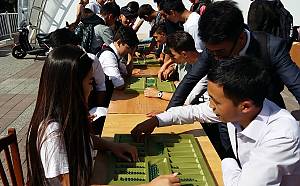
For several years, UNESCO has been putting a strong emphasis on bringing education and living heritage safeguarding together. In that regard, a webinar will take place on 26 January 2021, 13.00-14.30, Paris time
Read more
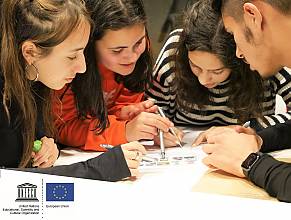
«Cuando están motivados, los alumnos consiguen mejores resultados. A través del patrimonio vivo, el aprendizaje se torna más interesante, significativo y motivador para ellos. También se fomenta la adopción de métodos de enseñanza innovadores, que mejoran la relación docente-alumno. Es gratificante mejorar la calidad de la educación y contribuir simultáneamente a algo más grande, como la salvaguardia de nuestro patrimonio vivo». Estas fueron algunas de las conclusiones del taller «Integrating intangible cultural heritage in school-based education. Lessons learnt from the UNESCO-EU pilot project» (Integrando el patrimonio cultural inmaterial en la educación escolar. Enseñanzas del proyecto piloto de la UNESCO y la UE), que tuvo lugar del 27 de febrero al 1 de marzo de 2020 en Rotterdam, organizado por la Comisión de los Países Bajos para la UNESCO y en colaboración con la red de Escuelas Asociadas de la UNESCO (red ASPnet).
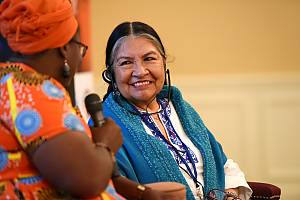
Entrevista con Tarcila Rivera Zea, Executive Director, Centro de Culturas Indígenas del Perú
Read more
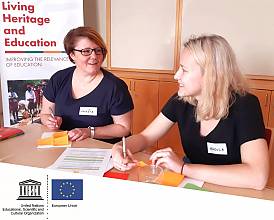
La incorporación del patrimonio vivo en las escuelas puede hacer que la educación resulte más estimulante, accesible y pertinente tanto para los docentes como para los niños.
Read more

La nueva prioridad relativa a la salvaguardia del patrimonio cultural inmaterial en la educación formal y no formal está cobrando fuerza gracias a la estrecha colaboración entre el Sector de Cultura y el Sector de Educación de la UNESCO. Muchas oficinas sobre el terreno, en particular la oficina de la UNESCO en Tashkent, han puesto en marcha actividades específicas sobre patrimonio vivo y educación.
Read more
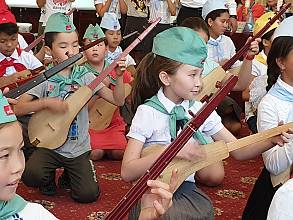
Las partes interesadas en la educación y la cultura de Kazajstán, Kirguistán, Tayikistán y Uzbekistán se han reunido por primera vez para debatir sobre las ventajas de incluir el patrimonio cultural inmaterial en los programas de educación formal e informal y los métodos necesarios a tal fin. La Oficina de la UNESCO en Almaty organizó en Bishkek (Kirguistán) una reunión subregional para Asia Central que se celebró los días 18 y 19 de junio de 2019 y cuyo anfitrión fue la Comisión Nacional de la República Kirguisa para la UNESCO.
Read more
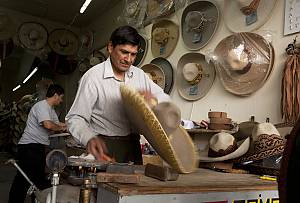
Un nuevo informe publicado por la UNESCO demuestra que la salvaguardia del patrimonio cultural inmaterial a través de la educación y formación técnica y profesional (EFTP) es un tema relevante, pero inexplorado.
Read more

On 18 December 2018, UNESCO Beirut, in partnership with the Lebanese National Commission for UNESCO, launched a pilot project called ‘Learn with the Intangible Cultural Heritage for a sustainable future’ that targets Lebanese public and private schools.
Read more

Under the European Year of Cultural Heritage 2018, UNESCO and the European Union teamed up to develop a new project strengthening the connections between heritage, youth and education.
Read more

From 29 October to 7 November, 2018 the Intangible Cultural Heritage Section and UNESCO-UNEVOC will co-host a virtual conference on ‘Integrating the safeguarding of intangible cultural heritage (ICH) in technical and vocational education and training (TVET)’.
Read more
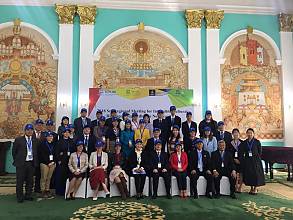
A sub-regional meeting for ICH safeguarding in Northeast Asia was held in Ulaanbaatar, Mongolia from 28 to 29 August 2018 on ‘ICH in Education: Towards Joint Collaboration for Promoting ICH in Formal and Non-Formal Education’.
Read more

Co-organized by the UNESCO Intangible Cultural Heritage Section and the International Institute for Capacity Building in Africa, a roundtable event on ‘Learning with Intangible Cultural Heritage in Education’ took place
Read more

The meeting organized from 21 to 23 June 2023 in Belgrade, Serbia by UNESCO, through its Regional Bureau for Science and Culture in Europe and the Regional Centre for the Safeguarding of Intangible Cultural Heritage in South-Eastern Europe in Sofia, Bulgaria, is generously hosted by the Ministry of Culture of Serbia.
Following up on the previous edition, this year’s session will continue exploring the nexus between intangible cultural heritage and education, with a special focus on secondary/professional/technical and vocational training - TVET and tertiary education across the South-East Europe region.
The meeting is aimed at the 2003 Convention’s Focal Points (or other appointed rep
Read more

UNESCO Bangkok office is co-organizing with ICHCAP a side-event ‘Bringing Living Heritage to the Classroom in Asia-Pacific to Promote Transformative Education’, in the context of the 2022 Asia-Pacific Forum for Sustainable Development, which takes place online on 25 March between 8am and 9 am (Paris time).
If you are interested in following this event, kindly register here.
Read more
La Entidad de Patrimonio Vivo y la Sección de Ciudadanía Global y Educación para la Paz de UNESCO organizan la segunda edición del curso de formación de formadores en línea sobre patrimonio vivo y educación en el espíritu del ODS 4, Meta 4.7. Reuniendo a los sectores de cultura y educación de la UNESCO, y en el marco del programa temático intersectorial sobre la salvaguardia del patrimonio cultural inmaterial en la educación formal y no formal, la formación en línea reforzará las capacidades de especialistas individuales de todo el mundo para actuar como personas de referencia capaces de apoyar y promover la convergencia
Read more
For more information on this event, please visit: https://www.ludovakultura.sk/pozvanka-webinar-zive-dedicstvo-a-vzdelavanie/
Read more
The two-day workshop gathered national teams from four West African countries to create awareness of the immense potential for achieving SDG 4 and safeguarding intangible cultural heritage through the integration of living heritage in formal and non-formal education. At the same time, it built the capacities of relevant stakeholders in Ghana, Liberia, Nigeria and Sierra Leone to develop and implement policies that will support this initiative at all levels of the educational system in the target Member States. In doing so, this activity supports an accelerated achievement of SDG 4.7, and encourage the safeguarding of the living heritage by communities and authorities.
Read more

Webinar: European Youth And Heritage, 23 April 2021, 14:00 to 15:30 (Paris time)
Read more

UNESCO, in collaboration with the International Information and Networking Centre for Intangible Cultural Heritage in Asia-Pacific Region under the Auspices of UNESCO (ICHCAP), will hold an online webinar entitled ‘Monitoring Intangible Heritage in Education
Read more
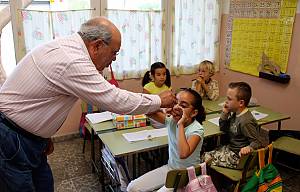
The expert meeting ‘Safeguarding intangible cultural heritage in formal and non-formal education’ has two main, inter-related objectives: to support periodic reporting to the Convention for the Safeguarding of the Intangible Cultural Heritage by deepening
Read more
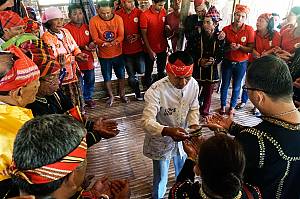
This online training of trainers’ workshop focuses on the following topics: Intangible cultural heritage in emergencie, Living heritage and the COVID-19 pandemic, Intangible cultural heritage and sustainable development, Intangible cultural heritage and education
Read more
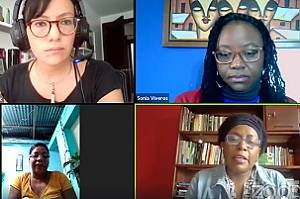
On 28 October 2020, the UNESCO Office in Quito held an online resiliart debate on the topic of ‘Re (ex) sistence in the face of the crisis: ethno-education, technical and vocational education and training (TVET) and intangible cultural heritage of Afro-descendant communities
Read more

Implemented from January 2019 to July 2020, the UNESCO-EU project Engaging Youth for an Inclusive and Sustainable Europe proposes an innovative approach to education by inviting teachers and learners to explore their living heritage and learn not only about it, but also
Read more

In January 2019, UNESCO and the European Union launched a new project to strengthen the connections between young people, cultural heritage and education. The project proposes an innovative approach to education by inviting teachers and learners to explore living heritage.
Read more
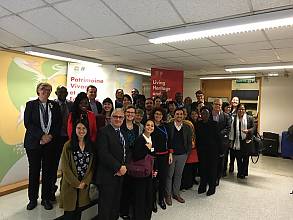
The meeting was organized within the framework of the Convention for the Safeguarding of the Intangible Cultural Heritage and the priority on ‘Safeguarding intangible cultural heritage in formal and non-formal education’.
Read more

A sub-regional meeting for ICH safeguarding in Northeast Asia was held in Ulaanbaatar, Mongolia from 28 to 29 August 2018 on ‘ICH in Education: Towards Joint Collaboration for Promoting ICH in Formal and Non-Formal Education’.
Read more
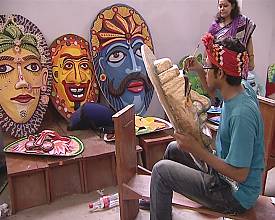
The 2019 Sub-regional Meeting for ICH Safeguarding in South Asia was held from 24 to 26 June in Dhaka, Bangladesh, to examine the current status of ICH education in South Asia and discuss ways forward.
Read more

For the first time education and culture stakeholders from Kazakhstan, Kyrgyzstan, Tajikistan and Uzbekistan came together to discuss benefits and methods of integrating intangible cultural heritage in formal and non-formal education programmes.
Read more

From 29 October to 7 November, 2018 the Intangible Cultural Heritage Section and UNESCO-UNEVOC co-hosted a virtual conference on ‘Integrating the safeguarding of intangible cultural heritage in technical and vocational education and training’.
Read more

On 26 October, 2018, the Living Heritage Entity, in partnership with the Education Sector at UNESCO Headquarters, held a webinar for the education for sustainable development (ESD) key partners.
Read more

The Intangible Cultural Heritage Section organized an intersectoral meeting on ‘Integrating intangible cultural heritage in education’ from 17 to 19 May 2017 at UNESCO Headquarters,
Read more

Co-organized by the UNESCO Intangible Cultural Heritage Section and the International Institute for Capacity Building in Africa, a roundtable event on ‘Learning with Intangible Cultural Heritage in Education’ took place
Read more

At this meeting specialists and community members shared and discussed concrete practical experiences and insights into how educational efforts can be deployed to strengthen the safeguarding of intangible cultural heritage.
Read more
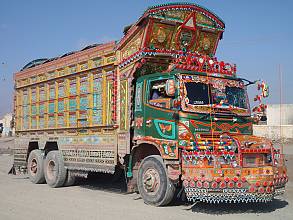
Este ejemplo de clase es uno de los planes didácticos que abordan diferentes temas curriculares, elementos del patrimonio cultural inmaterial (PCI) y principios de la Educación para el Desarrollo Sostenible (EDS), elaborados en el marco del programa Learning with Intangible Heritage for a Sustainable Future: Guidelines for Educators in the Asia-Pacific Region. Los planes de estudios muestran cómo pueden incorporarse los elementos del PCI a las asignaturas escolares, además de presentar enfoques pedagógicos innovadores y creativos para mejorar la calidad de las clases y los resultados del aprendizaje. Además, demuestran que el conocimiento de los libros de texto adquiere sentido para
Read more
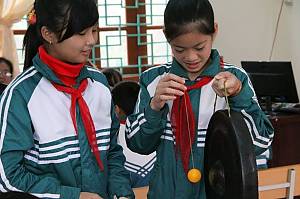
Este ejemplo es uno de los planes de estudios didácticos que relacionan diferentes materias curriculares, elementos del patrimonio cultural inmaterial (PCI) y los principios de la Educación para el Desarrollo Sostenible (EDS), elaborados como parte del programa Learning with Intangible Heritage for a Sustainable Future: Guidelines for Educators in the Asia-Pacific Region. Los planes de estudios muestran cómo pueden incorporarse los elementos del PCI a las asignaturas escolares, además de presentar enfoques pedagógicos innovadores y creativos para mejorar la calidad de las clases y los resultados del aprendizaje. Además, demuestran que los conocimientos que tienen que aprender los alumnos adquieren senti
Read more

Este ejemplo es uno de los planes de estudios didácticos que relacionan diferentes materias curriculares, elementos del patrimonio cultural inmaterial (PCI) y los principios de la Educación para el Desarrollo Sostenible (EDS), elaborados como parte del programa Learning with Intangible Heritage for a Sustainable Future: Guidelines for Educators in the Asia-Pacific Region. Los planes de estudios muestran cómo pueden incorporarse los elementos del PCI a las asignaturas escolares, además de presentar enfoques pedagógicos innovadores y creativos para mejorar la calidad de las clases y los resultados del aprendizaje. Además, demuestran que los conocimientos que tienen que aprender los alumnos adquieren senti
Read more
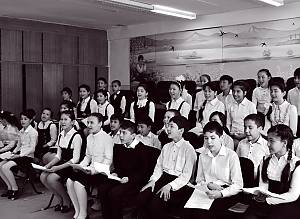
Este ejemplo de clase es uno de los planes didácticos que abordan diferentes temas curriculares, elementos del patrimonio cultural inmaterial (PCI) y principios de la Educación para el Desarrollo Sostenible (EDS), elaborados en el marco del programa Learning with Intangible Heritage for a Sustainable Future: Guidelines for Educators in the Asia-Pacific Region. Los planes de estudios muestran cómo pueden incorporarse los elementos del PCI a las asignaturas escolares, además de presentar enfoques pedagógicos innovadores y creativos para mejorar la calidad de las clases y los resultados del aprendizaje. Además, demuestran que el conocimiento de los libros de texto adquiere sentido para
Read more

Este ejemplo de clase es uno de los planes didácticos que abordan diferentes temas curriculares, elementos del patrimonio cultural inmaterial (PCI) y principios de la Educación para el Desarrollo Sostenible (EDS), elaborados en el marco del programa Learning with Intangible Heritage for a Sustainable Future: Guidelines for Educators in the Asia-Pacific Region. Los planes de estudios muestran cómo pueden incorporarse los elementos del PCI a las asignaturas escolares, además de presentar enfoques pedagógicos innovadores y creativos para mejorar la calidad de las clases y los resultados del aprendizaje. Además, demuestran que el conocimiento de los libros de texto adquiere sentido para
Read more

«Estrategias didácticas. Guía para docentes de educación indígena» es el resultado de la colaboración entre el Sindicato Nacional de Trabajadores de la Educación (SNTE) y la oficina de la UNESCO en México. La guía fue elaborada a partir del análisis de un proceso colaborativo que involucró a un equipo de especialistas de las áreas de etnografía y pedagogía y comprende un marco teórico, una propuesta metodológica y actividades didácticas que promueven la participación activa de los estudiantes en su lengua indígena y en español. También incluye materiales didácticos que los profesores de educación indígena pueden adaptar a su contexto escolar específico, a los difere
Read more

Este documento presenta un plan de estudios elaborado con la guía «Estrategias didácticas. Guía para docentes de educación indígena». Se ha probado en las escuelas con estudiantes, e incluye algunas fotos.
El plan de estudios se basa en el maya (lengua indígena) y en el sistema de medición utilizado en el contexto de la comunidad maya. Los alumnos de primaria aprenden a identificar las partes del cuerpo en español y en maya, a la vez que aprenden a realizar estimaciones y mediciones utilizando diferentes unidades de medida para medir objetos.
Read more
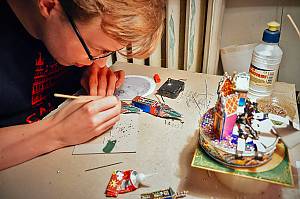
Poland is rich in decorative traditions involving motifs and ornaments, often seen on traditional costumes and objects around the home. By researching regional variations of these patterns and comparing them to local ones, students were introduced to different ICH elements. These were then used as examples to teach about symmetry during mathematics class.
Read more
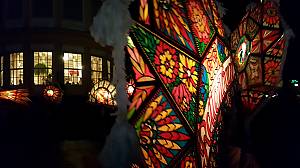
The Glöcklerlauf celebrations take place every year on 5 January in the Salzkammergut region of Austria. During the Glöcklerlauf parade, men, women and children wear costumes with colourful illuminated caps and bells. The Glöckler move in groups from house to house and through the villages to protect the people, the landscape and all animals from demons and calamity. In return, they receive drinks, snacks and even money for their work and help. Teachers collaborated to integrate this living heritage in several school subjects across different grades: German language, physics, art, CAD modules in computer classes, and an extracurricular project.
Read more
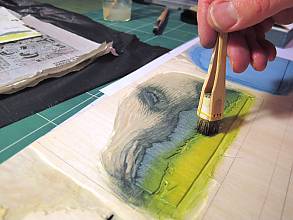
Campus Comenius is a young school striving for innovation in education, where traditional methods are combined with self-regulated learning. Through an online survey, teachers found that their 140 students have family ties in 37 countries around the globe. An exhibition dedicated to the pupils’ living heritage showcased the school’s cultural diversity. Among the different elements shared, the Hanga printing technique from Japan was selected to be integrated in art and mathematics classes.
Read more

The pilot project involved two different ICH elements that are deeply tied to Cyprus history and contemporary identity: lacework craftsmanship in Lefkara and the preparation of carob sweets in Anoyira. These elements were integrated in extracurricular activities and later in math classes, helping students to determine the volume of hemispheres of a given radius, the slope of a line and the angle between two intersecting lines.
Read more
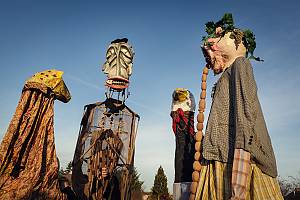
Masopust is a celebratory period occurring early in the calendar year that brings people together and strengthens the bonds within the community. During the colourful Masopust carnival, students connected school subjects with their local identity. They reflected on the social and cultural significance of the event from both a historical and a present day perspective, through discussions and projects in English conversation, history, civic education and art classes. A video made by students during the carnival will be used as a teaching resource in the future.
Read more
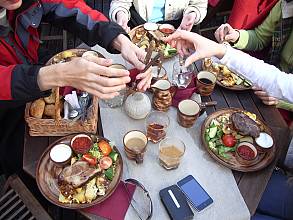
One of the most famous foods in Estonia is a cereal mix powder for drinks or desserts called kama. In mathematics, Estonian and English language classes, students explored the diverse dimensions of this well-known element. The implementation of an interdisciplinary approach encouraged the pupils to compare the preparation and uses of the kama in different contexts and motivated them to participate actively in the lessons.
Read more
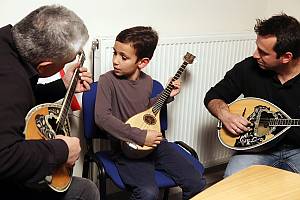
Rebetiko is a musical and cultural expression linked to song and dance that initially spread among the urban lower- and working-class populations in the early twentieth century. This school, located in the port city of Piraeus—which is one of the major urban areas where the genre emerged—was inspired by rebetiko to design a cross-curricular project in order to integrate it in the daily teaching of literature, English, physical education and ICT classes. Teachers used rebetiko to discuss gender stereotypes, and to improve students’ vocabulary and communication skills in a foreign language. Students enhanced their computer skills by developing a mobile app t
Read more

Kūčiukai cookies are prepared and served during the winter holidays. For young people in Lithuania, they taste like Christmas. Before the start of the holiday season, German, English, Russian and Lithuanian language teachers used a recipe for this traditional dish to teach new vocabulary and improve students’ oral and written communication skills. During the technology class, learners followed the recipe to bake their own Kūčiukai cookies. In mathematics, they calculated the cost of making them. The origins of this winter tradition were discussed in civic education. Learning by doing proved to be an inclusive and engaging activity for all, including stude
Read more
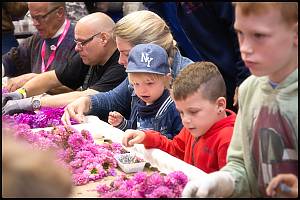
In the Netherlands, the poldermodel (consensus decision-making) is part of the curricula for both economics and social studies. It is based on the process of reaching consensus within a group through social dialogue. This concept was integrated into lessons on the Dutch system of decision making, the history and structure of the various organizations in the poldermodel and the relationship between employers and employees. Addressed in the context of living heritage, the poldermodel also helped strengthen students’ capacity to formulate arguments. New active pedagogies were introduced, such as role-playing, making learning even more interesting and engaging for students.
Read more

Galicia is a community with strong agricultural and fishing traditions. Spoken language has played an important role in passing down features of the local culture. In this spirit, teachers and students selected the carnival figure O Merdeiro and practices related to fishing, oral poetry and music to discover the significance of their living heritage and study Galician language and literature, geography and history, music and visual arts at school. Students described the overall experience as an emotional journey.
Read more

2021
Guía metodológica de apoyo a los docentes de primaria para la difusión de la Timbila como Patrimonio Cultural Inmaterial de la Humanidad en Zavala
Guía metodológica de apoyo a los docentes de primaria para la difusión de la Timbila como Patrimonio Cultural Inmaterial de la Humanidad en Zavala. La Universidad Pedagógica de Maputo, con el apoyo de la Oficina de la UNESCO en Maputo, elaboró una Guía metodológica de apoyo a los docentes de primaria para la difusión del Timbila como Patrimonio Cultural Inmaterial de la Humanidad en Zavala. Esta guía se inició tras la aprobación de la Ley Nacional del Sistema E
Read more
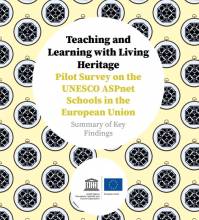
This survey on teaching and learning with living heritage represents an initial effort to document the integration of intangible cultural heritage(ICH) in school-based learning among the UNESCO Associated Schools Network (ASPnet) across the European Union, and to identify possible opportunities and challenges for teachers and learners when working with living heritage in curricular or extracurricular activities.
This pilot survey was developed under the joint UNESCO-EU pilot project called 2018 European Year of Cultural Heritage: Engaging Youth for an Inclusive and Sustainable Europe. The project proposes an innovative approach to education by inviting teachers and learners to explore their living heritage
Read more
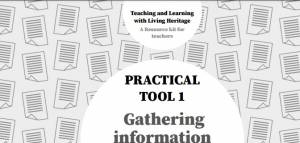
PRACTICAL TOOL 1 - Gathering information
(A resource kit for teachers developed under the project- Teaching and Learning with Living Heritage)
This resource was developed under the joint UNESCO-EU pilot project called 2018 European Year of Cultural Heritage: Engaging Youth for an Inclusive and Sustainable Europe. The project proposes an innovative approach to education by inviting teachers and learners to explore their living heritage and learn not only about it, but also with and through it.
Read more
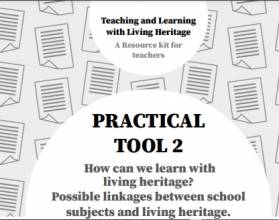
PRACTICAL TOOL 2 - How can we learn with living heritage? Possible linkages between school subjects and living heritage. (A resource kit for teachers developed under the project- Teaching and Learning with Living Heritage)
In this kit are some ideas that you may find helpful when thinking about integrating living heritage in your classroom or extracurricular activities.
This resource was developed under the joint UNESCO-EU pilot project called 2018 European Year of Cultural Heritage: Engaging Youth for an Inclusive and Sustainable Europe. The project proposes an innovative approach to education by inviting teachers and learners to explore their living heritage and learn not
Read more
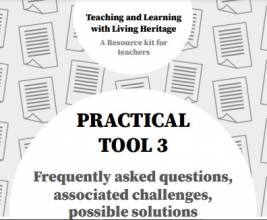
PRACTICAL TOOL 3 - Frequently asked questions, associated challenges, possible solutions (A resource kit for teachers developed under the project- Teaching and Learning with Living Heritage). This resource was developed under the joint UNESCO-EU pilot project called 2018 European Year of Cultural Heritage: Engaging Youth for an Inclusive and Sustainable Europe. The project proposes an innovative approach to education by inviting teachers and learners to explore their living heritage and learn not only about it, but also with and through it.
Read more

This resource kit was developed under the joint UNESCO–EU pilot project entitled 2018 European Year of Cultural Heritage: Engaging Youth for an Inclusive and Sustainable Europe.
‘By teachers for teachers’ is the driving idea behind this resource kit. Inspired by the experience UNESCO has accumulated from similar projects around the world, this set of resource materials is based on the ten innovative pilot projects jointly designed and implemented by ASPnet teachers and students under the UNESCO–EU project.
This resource kit includes several components that provide teachers with information on why and how to incorporate living heritage into their school based activities.
The ki
Read more
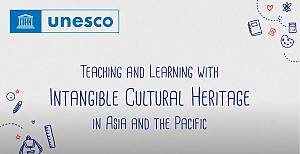
The Video Animations on Teaching and Learning with Intangible Cultural Heritage in Asia and the Pacific developed by UNESCO Bangkok presents a set of 6 short films that discuss the relevance of Living Heritage in Education and school curriculum.
Living heritage is all around us and bringing it to school teaching will enhance education quality, enliven the experiences of students and teachers, and contribute to keeping this heritage alive for current and future generations. The video series also states that —Whoever you are — teacher, school director, student, parent, heritage practitioner — you have a vital role to play in this process.
Check out the anima
Read more

The indigenous peoples of the Pacific developed a vast body of knowledge about the ocean and wayfaring. They navigated the ocean guided by stars, winds, waves and the behavior of birds, fish and whales. This resource pack provides instructors with the opportunity to teach about Pacific wayfaring while, at the same time, fulfilling learning objectives in school curricula. It includes suggested curriculum frameworks, marking schemes, a teacher’s guide, lesson plans, learner’s text and evaluation forms. These can be accessed from a dedicated website (compatible in English and Maori language).
Indigenous seafaring and knowledge of non-instrument navigation is consistent with, complementary to
Read more
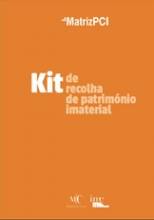
The Intangible Heritage Collection Kit was conceived as an instrument to promote the initiative and participation of young people in actions to safeguard the heritage of their respective community. This kit was a result of a joint collaboration between the Directorate-General for Cultural Heritage (DGPC) and the Directorate-General of Education (DGE) in Portugal. It is essentially designed for children in the 2nd and 3rd cycles of basic education and is meant to be used at the local level such as the village, parish, neighbourhood, and so on. It can also be employed for training and pedagogical activities by other entities
Read more

This lesson plan is intended for 7th-grade students studying Uyghur language and literature, music subject in Kazakhstan. By delving into the Ballad of Abdugopur Kutlukov, students will not only become acquainted with the narrative of the ballad but also gain insight into and draw comparisons between the roles of two musical instruments: the Uyghur Dutar and the Kazakh Dombra, within their respective cultural contexts. Group activities will be employed to foster students’ communication skills and, simultaneously, instill in the younger generation an awareness of the significance and intrinsic value of living heritage.
Country: Kazakhstan
Pages in document: 173-174
Related project or p
Read more
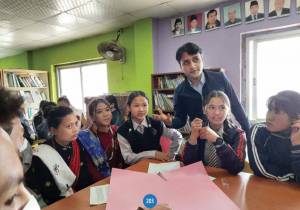
This lesson plan has been tailored for 6th-grade Thai students with the aim of instilling a sense of pride in their rich cultural heritage while simultaneously nurturing an interest in the preservation and promotion of their own ethnic traditions and those of other ethnic groups, particularly among the younger generation. The primary focus will be on immersing students in the traditions, cultures, beliefs, and lifestyles of eight ethnic communities residing in the Mae Ai District, Thailand. To facilitate comprehensive learning, students will be organized into different groups, enabling them to develop various essential skills, including active reading, concept mapping, and
Read more
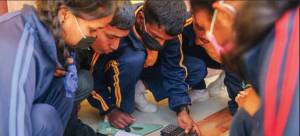
This math lesson plan is specifically designed for 2nd-grade students in Kyrgyzstan. Its primary objectives are to enhance students’ vocabulary related to the game, deepen their understanding of the rules of a traditional dice game, and introduce them to concepts of multiplication and division within a mathematical context. The game itself serves as a practical application of mathematics in everyday life, offering students a tangible connection between math and traditional activities. By engaging with this lesson, students will not only acquire mathematical skills but also gain an appreciation for the significance and cultural value of traditional games.
Country: Kyrgyzstan
Pages
Read more

This lesson plan is crafted for 8th-grade Nepali students and centers around the use of multimedia resources to facilitate their understanding and appreciation of traditional water containers, tya:pa. Subsequently, students will be guided through the process of designing, drawing, and crafting their own tya:pa, which promotes hands-on learning and develops their manipulative skills. A showcase opportunity will also be provided for students to describe their tya:pa creations to their peers and other visitors. This presentation aspect sharpens their expressive skills while also fostering a deeper understanding and appreciation of Nepali culture and traditions. Overall, this lesson plan
Read more
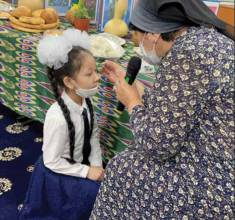
This month-long interdisciplinary lesson plan, designed for 9th-grade Kyrgyz students, merges biology, chemistry, and geography to deepen their understanding of traditional plant knowledge and soap-making practices. Through exploration, identification, and collection of local plants, students will gain hands-on experience in soap production, bridging science and culture. The culmination of this lesson plan, where students will present their soap products and reflect on the contrast between traditional and modern soap-making methods, inspires an appreciation for preserving local plant wisdom and cultural heritage, nurturing both scientific and cultural awareness in the classroom.
Country: Kyrgyzstan
Pages in document: 182
Related project or programme: Safeguarding
Read more
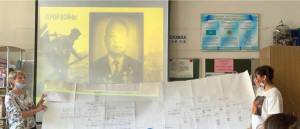
This history lesson plan, tailored for 9th-grade students in Kazakhstan, uniquely explores the realm of human genetics and DNA by delving into the study and creation of family trees. Through a structured process that involves interviewing relatives and gathering information, students will develop invaluable skills in information synthesis. The culmination of this journey involves the compilation of students’ own family trees. This approach serves to underscore the significance to family traditions while inspiring a sense of appreciation and commitment to preserving and passing on traditional knowledge among the younger generation.
Country: Kazakhstan
Pages in document: 183-184
Related project or programme: Safeguarding I
Read more
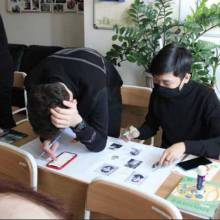
This history lesson plan, crafted for 9th-grade students in Kazakhstan, centers on the meaningful exploration of family members who participated in World War II, providing a gateway for younger generations to grasp Kazakhstan’s role in this global conflict. The curriculum is strategically designed to foster students’ research and presentation capabilities. Beyond skill development, the lesson plan prioritizes the illumination of students’ family histories, nurturing a profound sense of connection to their familial roots and a profound bond with their homeland.
Country: Kazakhstan
Pages in document: 184-185
Related project or programme: Safeguarding Intangible Cultural Heritage in Formal Education in Asia and the Pacif
Read more

This three-month history lesson plan is tailored for Korean students in grades 7-9 and offers a unique perspective by delving into the diverse practices associated with Korean cuisine, with a particular focus on kimchi. The primary goal is to enable students to comprehend the multifaceted cultural characteristics, traditions, and values that have evolved over different periods and regions of Korea. Through group work, students will develop comprehensive learning skills, encompassing the use, analysis, comparison, and integration of various learning materials. From a cultural standpoint, this lesson plan will guide students in exploring strategies to preserve and propagate their traditional heritage, thereby
Read more

This multidisciplinary lesson plan, tailored for 5th graders in Korea, incorporates elements of Korean language, social studies, civic education, and physical education to introduce students to the concept of living heritage through the exploration of “namsadang nori.” The primary objectives are to familiarize students with the essence of living heritage and the historical significance of namsadang nori in promoting human rights. By studying how people in the past utilized namsadang nori to advocate for human rights, students will not only grasp the concept of human rights but also appreciate their importance and learn how to apply these principles in their
Read more
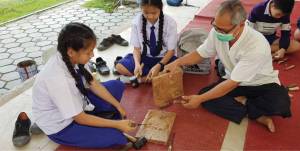
This lesson plan is designed for Thai students in grades 4-6 and focuses on cultivating an understanding of the intricate craft skills required for wood carving and decorative patterns. Students will delve into the historical context of wood carving patterns, leading to thoughtful discussions about the processes, meanings, and cultural significance of these traditional crafts. Teachers will actively engage students in the design and hands-on carving of personalized wood patterns, fostering not only an appreciation for preserving and passing on traditional culture but also instilling a sense of belonging to their community. Through this hands-on approach, students will develop a tangible
Read more
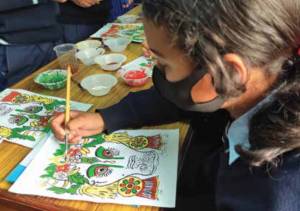
This lesson plan is tailored to the 7th-grade Cambodian students, aiming to enrich their understanding of traditional Khmer kites while also fostering an appreciation for art as a foundation for the study of Buddhism. Students will delve into the historical context and patterns of traditional Khmer kites, gaining insights into the intricate artistry embedded in these cultural artifacts. Simultaneously, the teacher will introduce students to the materials and techniques used in crafting kites, guiding them through the process of creating their own. The culmination of the lesson involves students presenting their handcrafted kites in the classroom, initiating discussions and peer
Read more
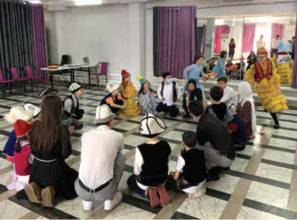
This lesson plan, designed for 4th-grade students in Kyrgyzstan, integrates physical education and social studies to explore the cultural significance of traditional games, Ak Terek Kok Terek and Altynshakek. By studying the rules and history, as well as playing these games, students not only develop physical skills such as endurance and coordination but also enhance their communication, teamwork, and, most importantly, gain a sense of responsibility for preserving Kyrgyzstan’s rich cultural heritage as the future generation. This lesson plan seeks to engage students in active learning, fostering an understanding of the games’ social function and promoting cultural awareness.
Country:
Read more

This lesson plan, tailored for 7th-grade students in Nepal, seamlessly integrates health and physical education with mathematics and social studies. Teachers will introduce students to the Mha Puja ritual and the process of making mandalas, linking cultural practices with creativity. The curriculum will further reinforce students’ mathematical skills, including but not limited to measurement and division skills, by involving them in the planning of a balanced diet. Through this holistic approach, students will gain an understanding of the significance of a well-balanced diet for overall health and, more significantly, develop a profound sense of self-respect, cultural appreciation, and an awareness
Read more
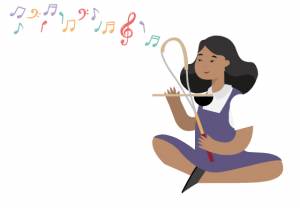
Providing lesson plan guidelines for bringing intangible cultural heritage (ICH) into the teaching and learning process, including how to select key ideas and concepts, as well as how to set learning objectives, phased step-by-step learning activities and after-school extension activities. More importantly, it helps teachers to understand the roles and responsibilities of teachers and the communities in ICH classrooms.
Pages in document: 146-161
Related project or programme: Safeguarding Intangible Cultural Heritage in Formal Education in Asia and the Pacific
English | Khmer | Nepali | Russian | Thai
Read more
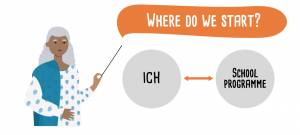
Providing ideas on how to incorporate intangible cultural heritage (ICH) into the content of various school subjects. Encouraging teachers to discover what kinds of activities can be developed in the classroom. The most important thing is to emphasize that in all circumstances, content, activities, and learning processes should revolve around how to help students discover and explore ICH elements and its community significance.
Pages in document: 162-171
Related project or programme: Safeguarding Intangible Cultural Heritage in Formal Education in Asia and the Pacific
English | Khmer | Nepali | Russian | Thai
Read more
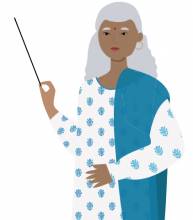
This section offers a collection of teacher-proven lesson plans that can serve as a source of inspiration for educators looking to develop their own engaging and effective teaching materials. These lesson plans cover a wide range of subjects and teaching methodologies, providing valuable insights into innovative approaches to classroom instruction. Whether you are an experienced teacher seeking fresh ideas or a novice educator looking for a starting point, these examples can help you craft lessons that captivate your students and enhance their learning experiences.
Pages in document: 172
Related project or programme: Safeguarding Intangible Cultural Heritage in Formal Education in Asia
Read more

Numerous methods can be employed to gather information for a school activity, with desk research and interviews being the most commonly used approaches. To ensure the success of such endeavors, a wealth of guidance on conducting interviews and fieldwork is readily available. This information-gathering process not only equips educators with a deeper understanding of their chosen element of intangible cultural heritage (ICH) but also facilitates the creation of a captivating and unforgettable learning experience for students.
Pages in document: 194-199
Related project or programme: Safeguarding Intangible Cultural Heritage in Formal Education in Asia and the Pacific
English | Khmer | Nepali | Russian | Thai
Read more
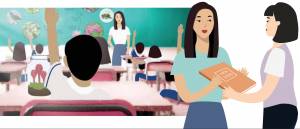
Recognizing the inherent diversity among students stemming from their socio-cultural and geographic backgrounds, it’s crucial to acknowledge that school activities may not always align with the familiar experiences of all students, especially in the context of intangible cultural heritage (ICH). However, a multicultural classroom environment provides a valuable opportunity to explore diverse perspectives, nurture a deeper understanding of and respect for cultural diversity, and promote the principles of global citizenship education. While teaching in such diverse settings may present challenges, it can also be a powerful asset. Implementing strategies such as cultural exchange events, collaborative projects, field trips, and
Read more
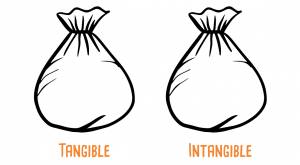
When incorporating intangible cultural heritage (ICH) into the teaching and learning process, teachers may encounter common challenges such as a lack of resources, cultural sensitivity concerns, student engagement issues, curriculum integration difficulties, assessment and evaluation complexities, time constraints, parental and community involvement hurdles, potential for stereotyping and misconceptions. In response to these common problems, this section provides teachers with a solution guide to solve these problems and therefore, create a harmonious and creative classroom.
Pages in document: 205-213
Related project or programme: Safeguarding Intangible Cultural Heritage in Formal Education in Asia and the Pacific
English | Khmer | Nepali | Russian | Thai
Read more
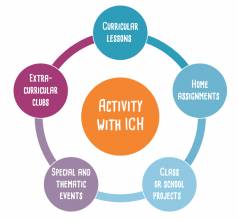
This section offers a collection of worksheets designed to guide teachers in the initial stages of developing lesson plans. These worksheets serve as valuable tools for conceptualizing, structuring, and organizing lesson ideas, providing a framework for effective teaching strategies. Whether you’re a novice educator seeking assistance in lesson planning or an experienced teacher looking for fresh approaches, these worksheets can help you create engaging and purposeful lesson plans from the ground up, ensuring a meaningful and enriching learning experience for your students.
Pages in document: 214-223
Related project or programme: Safeguarding Intangible Cultural Heritage in Formal Education in Asia and
Read more
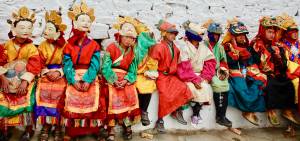
Undoubtedly, oral traditions, encompassing storytelling, folk songs, proverbs, and oral history, play a crucial role in transmitting knowledge, wisdom, and cultural values. The significance of these traditions is effectively captured in this practical and commendable lesson plan designed for 10th-grade students, where oral traditions serve as a core element of living heritage. Recognizing the significance of transferring knowledge and ideas from one generation to the next through oral tradition, this lesson plan stands out for offering practical steps and engaging activities, providing a meaningful framework for engaging students with this rich aspect of cultural heritage.
Country: Bhutan
Read more

This mathematics lesson plan is tailored for 9th-grade students in Nepal, focusing on the exploration of geometric properties of triangles and trigonometric functions. It aims to bridge the gap between theoretical knowledge and real-life applications. The lesson plan encourages students to work in small groups alongside local artisans from the local community. During this collaborative experience, they will observe and actively participate in the ladder-making process, which involves taking precise length and angle measurements. This hands-on approach allows students to compare the theoretical formulas they’ve learned in the classroom with practical, real-world applications. The ultimate goal is to empower students t
Read more

There are many areas of sustainable development to which intangible cultural heritage safeguarding can contribute: gender equality, cultural diversity and creativity, education, health, income generation and natural disasters, peace-building and more.
UNESCO’s innovative MOOC on Living heritage and sustainable development is a six-week self-paced course, that equips learners to understand how intangible cultural heritage or ‘living heritage’ is related to sustainable development and its relevance in addressing today’s development challenges.
Developed by UNESCO in collaboration with the International Information and Networking Centre in Asia and the Pacific under the auspices of UNESCO (ICHCAP) and the SDG Academy, the course brings togethe
Read more
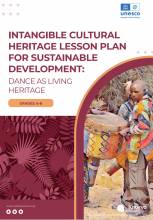
‘Sustainability Starts with Teachers’ is an innovative UNESCO-led capacity-building programme for southern African teacher educators in Early Childhood Care and Education (ECCE), Primary and Secondary Education, and Technical Vocational Education and Training (TVET) from 11 countries. It responds to regional sustainable development concerns and opportunities, the Africa 2063 Agenda and the Sustainable Development Goals (SDG). As a direct outcome of this project, ‘culture-specific’ resource material for teachers was developed, aiming at providing teachers with practical tools on how to integrate living heritage in the classroom.
4 lesson plans have been co-developed with the insights of teachers who have piloted them in their classrooms.
The
Read more

‘Sustainability Starts with Teachers’ is an innovative UNESCO-led capacity-building programme for southern African teacher educators in Early Childhood Care and Education (ECCE), Primary and Secondary Education, and Technical Vocational Education and Training (TVET) from 11 countries. It responds to regional sustainable development concerns and opportunities, the Africa 2063 Agenda and the Sustainable Development Goals (SDG). As a direct outcome of this project, ‘culture-specific’ resource material for teachers was developed, aiming at providing teachers with practical tools on how to integrate living heritage in the classroom.
4 lesson plans have been co-developed with the insights of teachers who have piloted them in their classrooms.
Thi
Read more
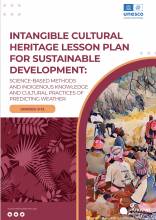
‘Sustainability Starts with Teachers’ is an innovative UNESCO-led capacity-building programme for southern African teacher educators in Early Childhood Care and Education (ECCE), Primary and Secondary Education, and Technical Vocational Education and Training (TVET) from 11 countries. It responds to regional sustainable development concerns and opportunities, the Africa 2063 Agenda and the Sustainable Development Goals (SDG). As a direct outcome of this project, ‘culture-specific’ resource material for teachers was developed, aiming at providing teachers with practical tools on how to integrate living heritage in the classroom.
4 lesson plans have been co-developed with the insights of teachers who have piloted them in their classrooms.
Thi
Read more
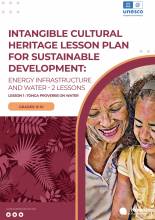
‘Sustainability Starts with Teachers’ is an innovative UNESCO-led capacity-building programme for southern African teacher educators in Early Childhood Care and Education (ECCE), Primary and Secondary Education, and Technical Vocational Education and Training (TVET) from 11 countries. It responds to regional sustainable development concerns and opportunities, the Africa 2063 Agenda and the Sustainable Development Goals (SDG). As a direct outcome of this project, ‘culture-specific’ resource material for teachers was developed, aiming at providing teachers with practical tools on how to integrate living heritage in the classroom.
4 lesson plans have been co-developed with the insights of teachers who have piloted them in their classrooms.
In
Read more

The Resource kit for primary a secondary school teachers from Ukraine ‘Teaching and Learning with Living Heritage in Ukraine’ is inspired by the UNESCO-EU ‘resource kit’ developed in 2021 in European Union countries. It includes a step-by-step guidance on how to integrate living heritage in core school subjects, 10 case studies from EU countries and 11 case studies from Ukraine demonstrating how teachers implemented their innovative pilot projects across different contexts and conditions. It also includes a short film showcasing the experience of a secondary school in Odesa with integrating traditional clay toys in history, mathematics, geography, chemistry, biology, physics and 3D modeling classes
Read more

The joint UNESCO-EU project 2018 European Year of Cultural Heritage: Engaging Youth for an Inclusive and Sustainable Europe encompassed a series of activities carried out in close collaboration with the UNESCO Associated Schools in the European Union (ASPnet members). These were planned and designed to help schools map the living heritage present in the school community and explore the ways of integrating the same in curricular and extracurricular activities. During the activities, teachers noticed an improvement of learning outcomes as living heritage helped connect theoretical knowledge with students’ everyday life, while motivating them to be more active and creative. The school t
Read more

This course was developed by UNESCO Bangkok, The International Information and Networking Centre for Intangible Cultural Heritage in the Asia-Pacific Region under the auspices of UNESCO (ICHCAP) and the Asia-Pacific Centre of Education for International Understanding under the auspices of UNESCO (APCEIU). It provides key resources and guidance for teachers and people interested in education and culture on why and how to integrate living heritage in their lessons and extracurricular activities in the school. Such lessons and activities aim to make learning more contextualized, relevant and engaging for students while they help raise awareness about the importance of safeguarding living
Read more
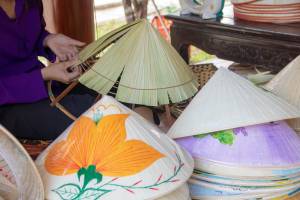
This thoughtfully crafted lesson plan designed for grades 6-7 introduces students to the traditional craft of making conical hats and explores their cultural significance, particularly within the context of Vietnamese culture. Using the conical hat as a focal point provides an excellent opportunity for the younger generation to delve into the artistry of this craft while gaining valuable insights into Vietnamese culture and its evolution over time. The emphasis on working with communities, particularly rural ones, not only offers students firsthand experience with cultural heritage but also becomes a catalyst for community development. By engaging with the craft and the communities
Read more
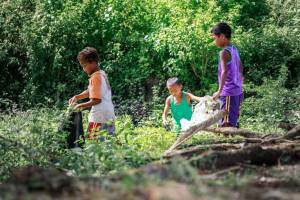
This 12th-grade lesson plan skillfully intertwines living heritage with the school curriculum, providing a unique educational experience. By guiding students through an analysis of various philosophical concepts related to the environment, the lesson plan draws insights into the Filipino perspective on the relationship between humanity and nature through oral traditions and expressions. A notable feature is the immersive integration of student identity throughout the learning process, ensuring the relevance of the material to the students’ cultural context and needs. Furthermore, the deep community involvement in the learning process strengthens the students’ connection to both their school and local community. The
Read more
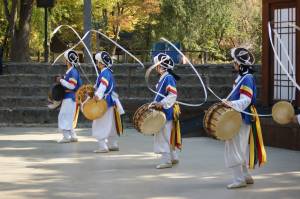
This impactful 6th-grade lesson plan advocating for peace through the shared heritage of North and South Korea exemplifies a powerful approach to education. Noteworthy for its comprehensiveness and detail, the plan engages in an impressive and thorough exploration of values, meanings, and pluralism. What makes this lesson plan particularly commendable is its recognition of education as a catalyst for peace promotion and conflict reduction. Through a focus on the learning, preservation, and transmission of intangible cultural heritage, coupled with innovative and proficient teaching methods, the plan demonstrates a commitment to fostering a deeper understanding between diverse communities. The incorporation of
Read more
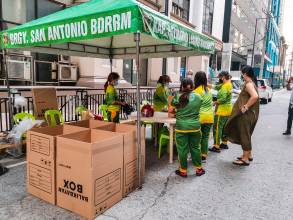
This 12th-grade lesson plan centered on “Bayanihan”, serves as an exemplary model for harnessing the power of intangible cultural heritage (ICH) in education. By focusing on the volunteerism culture, Bayanihan, this lesson plan guides, inspires, and equips students with the skills and motivation needed to develop practical community-based action plans. The lesson plan underscores the essential role of ICH in sustainable development, illustrating the value of cultural traditions in addressing contemporary challenges. Through hands-on experience and information gathering within the community, students not only hone crucial skills but also establish stronger connections with their local environment, fostering social cohesion, and
Read more

This exemplary interdisciplinary lesson plan for 8th-grade is remarkably well-crafted, offering clarity, comprehensiveness, and universal applicability. Its strength lies in an exceptionally well through-out and transparent methodology rooted in a 7 E’s of learner-centered model of teaching and learning. Addressing crucial global issues, such as environmental preservation, understanding human impacts on ecosystems, and valuing cultural practices for environmental sustainability, correspond to the reality of global communities. Various detailed learning activities align with clear objectives and support differentiated instruction. By incorporating a host of appropriately combined innovative techniques and hands-on activities, it caters to varied student needs. Noteworthy is the seamless integration o
Read more

A highly articulate and efficient lesson plan has been crafted around the theme of Saykha rituals, encompassing several dimensions including enactment, research, and ethical considerations. It skillfully guides students to delve into the distinctive aspects of this ancient practice, encouraging reflection on its historical and cultural importance within the community. The ultimate goal is to instill an understanding of the significance of preserving the Saykha ritual. This lesson plan serves as an exemplary blueprint, easily adaptable to various contexts. In essence, it contributes to the cultivation of respect for living heritage, fostering an inspirational drive among the younger generation to
Read more

This science lesson plan designed for grades 7-9 students, provides a comprehensive exploration of the significance of herbaceous plants. Students delve into understanding the traditional uses of these herbs, considering their cultural and health relevance to the region. The lesson plan further guides students in the construction of a herbarium, facilitating the storage and analysis of some of the most endangered plant species. From an ecological standpoint, the curriculum fosters an understanding of the importance of biodiversity and emphasizes the practice of sustainable development. The incorporation of outdoor observation not only enables students to directly witness and save endangered herbs but
Read more
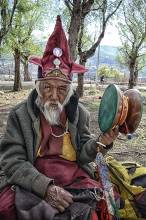
This 8th-grade lesson plan, centered on shamanic traditions, reflects the profound influence of religious faith on various facets of Bhutanese daily life and values. Specifically, it explores the practices of worshipping and praying to deities within the shamanic framework. Recognizing the endangered status of shamanism as a fading faith, the lesson plan serves as a dedicated effort to impart an understanding of this ancient religious belief to the younger generation. Beyond education, its broader purpose is to actively contribute to the preservation of shamanism and its cultural significance within the community, ensuring its continuity for future generations.
Country: Bhutan
Read more

This lesson plan, tailored for freshman year university students, centers around the traditional rituals of Huizhou as a fundamental element of living heritage. Its focus on local culture allows learners to delve into the intricacies of the regional aesthetic, emphasizing understanding the cultural essence and social etiquette. The integration of traditional rituals into the art education curriculum not only encourages active participation in intangible cultural heritage practices but also facilitates the transmission, promotion, and cultural rejuvenation of heritage. By engaging in these practices, university students can deepen their comprehension of local culture, enhance their artistic appreciation, and foster a heightened
Read more
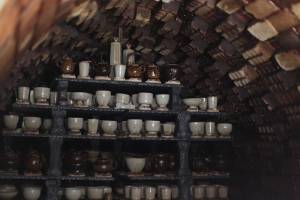
This 7th-grade mathematics lesson plan offers a captivating and engaging learning experience by integrating circular geometry into the context of Jingdezhen porcelain, a significant element of China’s intangible cultural heritage (ICH). Beyond teaching mathematical concepts, it provides students with a profound understanding of the intricate techniques and materials used in porcelain production and kiln construction. What sets this plan apart is its emphasis on environmental responsibility by exploring recycling and sustainability in the porcelain firing process, aligning with global concerns. The innovative approach of involving students’ family members, who are the practitioners of ICH, not only enhances family engagement in edu
Read more

This innovative lesson plan tailored for students in grades 5-6 stands out for its uniqueness, focusing on batik as a creative medium for self-expression. Through this lesson, students will not only acquire knowledge about the art of batik but also have the opportunity to express their thoughts and feelings creatively into crafting simple yet beautiful batik patterns. The added dimension of creating personal batiks fosters a sense of connection as these artistic creations can be shared and passed on among friends and family. Moreover, the lesson plan spans various subjects and incorporates diverse teaching activities, enhancing the interdisciplinary learning experience. As
Read more
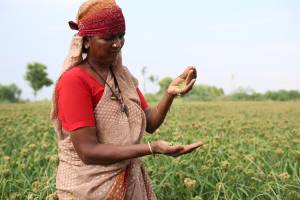
This 8th-grade biology lesson plan employs the 5E model and a range of pedagogical approaches to cater to diverse learning needs, fostering active student engagement in discussions about agricultural practices. Through hands-on planting activities and interactions with farmers, students are prompted to consider the preservation of cultural identity as well as enhancement of agricultural productivity. Assessment methods including group work and presentations, offer students a platform to share their comprehension of sustainable agriculture principles. More significantly, these activities draw attention to the younger generation, emphasizing the ongoing evolution of sustainable agriculture in the region. This comprehensive approach not only imparts
Read more
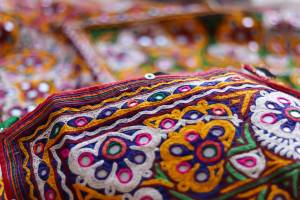
This 9th-grade lesson plan is a prime example of interdisciplinary education, using social science as its central subject while drawing from various disciplines like art, mathematics, and language. By immersing students in hands-on experiences, culminating in the creation of a tangible artefact under the guidance of intangible cultural heritage practitioners. Through incorporating a diverse range of educational materials and engaging classroom activities, this lesson plan provides an ideal platform for implementing differentiated instruction and the multiple intelligences framework, catering to various learning styles and abilities. Moreover, the focus on repurposing textiles to create new handicrafts aligns with contemporary concerns about
Read more

Crafted for 2nd-grade students, this lesson plan offers a captivating exploration of Varanasi, the city in which the students reside, immersing them in its vibrant cultural practices encompassing religious rituals, music, dance, and legends. The lesson aims to provide a comprehensive understanding of Varanasi, encompassing its cultural richness, historical significance, and geographical context. By delving into the unique aspects of their city, students will not only enhance their cultural awareness but also will ignite a curiosity to delve further into the intricate tapestry of Varanasi’s heritage. The diverse learning sessions and activities will not only contribute to the development of s
Read more

This engaging lesson plan designed for students in grades 7-12 demonstrates a commendable effort to bridge various modes of thought through mathematics. By exploring mathematical concepts such as modulo, multiplication, and remainder, students are introduced to the ancient Javanese number system, and the ethnomathematics associated with the Saka calendar. The lesson not only imparts knowledge about a unique historical calendar but also aims to convey the wisdom of the ancestors to the younger generation. Beyond the mathematical principles, the overarching goal is to develop students’ appreciation for cultural heritage, fostering a mindset of curiosity and openness to ongoing exploration of cultural
Read more

This lesson plan, incorporating song, play, and dance as elements of living heritage, is notably practical and relevant, particularly considering that grade 3 students benefit directly from these living heritage. Leveraging games as a means of cultural expression is particularly fitting for this age group, allowing them to share and celebrate their cultural backgrounds seamlessly. The cross-curricular approach expands beyond physical education, enriching the acquisition of knowledge, skills, and attitudes in language, culture, and music. The lesson plan stands out for its rich and engaging teaching and learning activities, fostering meaningful discussions, and providing clear assessment criteria. In addition, its adaptability
Read more
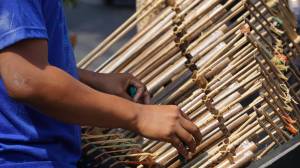
This 8th-grade physics lesson plan presents clear and innovative concepts and ideas for teaching the physics conception of sound using the traditional musician instrument, the flute. Through exploring the intricacies of sound production within a traditional music system, students will gain valuable insights into sound transmission. Beyond the physical acoustic, the lesson plan also incorporates an exploration of sustainable methods for growing and harvesting bamboo, the material traditionally used for making flutes. This interdisciplinary approach will not only enhance students’ understanding of physics knowledge but also will delve into aspects of biology and sustainability. Consequently, students will benefit from a h
Read more

This meticulously designed lesson plan for students in grades 4-5 provides an immersive exploration of the Malaysian kite, Wau, inviting students to delve into its aesthetic and cultural significance. By guiding students through the hands-on experience of making and flying Wau, the lesson will not only enhance their practical skills but also will deepen their understanding of traditional culture. Kites, as cultural symbols, embody a fusion of craftsmanship, art, and performance, a tradition that holds particular importance in Malaysia. By integrating broader historical context, cultural significance, and regional content, the lesson plan offers students a holistic perspective on the rich heritage
Read more

This project, when aligned with the school subject of Economics, demonstrates a comprehensive approach to both preserving living heritage and creating a sustainable future. By teaching students how to make traditional ropes and exploring marketing strategies, starting with local temples, the initiative not only safeguards living heritage but also introduces economic viability. What sets this plan apart is its profound understanding of the local community, incorporating underprivileged groups through home employment, showcasing the interconnectedness of economic and societal sustainability pillars. Leveraging local aromatic plants as natural resources further emphasizes environmental consciousness. Integrating the use of incense ropes with meditation classes
Read more

Commencing with the exploration of biodiversity and its intrinsic values, this 10th-grade lesson plan stands out for its commitment to inquiry-based learning, fostering a deeper understanding of the topic. A distinctive feature lies in its bilingual and code-switching approach, effectively addressing potential terminology misunderstandings stemming from students’ diverse linguistic backgrounds. This inclusivity extends to the use of multi-modal learning materials, catering to a variety of learning needs and styles. The lesson plan guides students through an exploration of indigenous practices that contribute to biodiversity conservation, prompting reflections on contemporary environmental challenges. The incorporation of a wide array of teaching and l
Read more
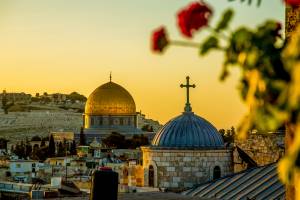
This 12th-grade lesson plan, centered on multiculturalism and religious beliefs, offers a remarkable approach to fostering cultural understanding and unity among students from diverse backgrounds. By using religious beliefs as a gateway to exploring the unique cultures of Christianity, Islam, and Lumad, it not only encourages students to appreciate their own cultural heritage but also builds bridges of understanding and empathy between them and their peers. This approach of promoting cultural identity not only enhances cultural sensitivity but also raises awareness of the rich tapestry of human diversity. Ultimately, this lesson plan empowers the younger generation to celebrate and respect
Read more

This inventive lesson plan, tailored for 6th-grade students, revolves around the cultural gem of Bongsan Talchum, a traditional masked dance with historical roots as a platform for expressing socio-emotion. Leveraging modern technology, the lesson plan guides students to embody and understand the characters in the mask dance, learning the intricate movements from intangible cultural heritage (ICH) practitioners. This immersive experience not only deepens students’ appreciation for Bongsan Talchum as an ICH but also encourages them to explore and address contemporary social issues, including those related to the environment, poverty, and cultural bias. By engaging students in the reconstruction of the
Read more
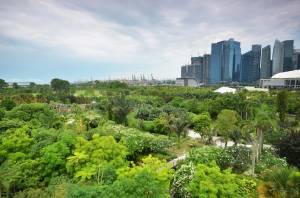
This 9th-grade geography lesson plan is thoughtfully designed with clear learning objectives, incorporating a diverse range of digital and collaborative tools to cater to differentiated teaching and learning activities. The incorporation of Knowledge-Skills-Abilities objectives, along with corresponding assessment methods, adds precision to the instructional approach. The strategic inclusion of field trips goes beyond the traditional classroom setting, exposing students to a network of practitioners and reinforcing real-life connections to the subject matter. The emphasis on sustainable development is effectively woven into the learning process, highlighting the threat to food self-sufficiency posed by the climate crisis. The variety of activities during
Read more
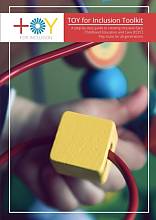
The TOY (together old and young) for Inclusion Toolkit provides conceptual and practical information necessary to enable trainers and practitioners to establish and manage multigenerational play spaces that combat segregation and enhance cohesion within communities. Developed through the TOY for Inclusion: Community-based Early Childhood and Care for Roma Children project, the approach has been implemented across seven European countries. At its core is the Early Childhood Education and Care (ECEC) Play Hub, which provides safe, welcoming, inclusive and creative spaces for multiple generations to interact, play and learn together. As illustrated in several examples, ECEC Play Hubs based on the
Read more
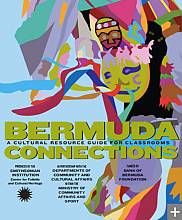
The ‘Bermuda Connections’ guide contains a classroom handbook, a set of essays and supplemental lesson plans that enable teachers to integrate intangible cultural heritage into their classroom. The handbook presents nine different aspects of Bermudan intangible cultural heritage (ICH) with accompanying learning objectives, cross curricular links, lesson plans and targeted goals from the national social studies curriculum. It offers a practical guide for Bermudan educators to teach about ICH while also meeting broader educational goals related to social identity, global awareness, temporal change and research and interpersonal communication skills. Additionally, the kit and its development process (described within) can serve as
Read more
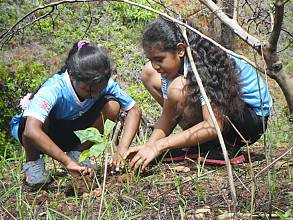
This sample is one of a number of didactic lesson plans relating different curricular subjects, intangible cultural heritage (ICH) elements and Education for Sustainable Development (ESD) principles, developed as part of the Learning with Intangible Heritage for a Sustainable Future: Guidelines for Educators in the Asia-Pacific Region. The lesson plans show how ICH elements can be incorporated into school subjects, as well as present innovative and creative pedagogical approaches to enhancing the quality of lessons and improving learning outcomes. Furthermore, they demonstrate that knowledge that students have to learn takes on meaning for them when they are able to relate
Read more
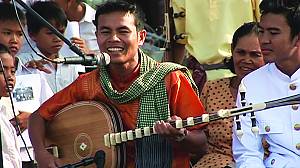
The contemporary Cambodian education sector has recognized the need to safeguard and revive the intangible cultural heritage (ICH) previously forbidden under the Khmer Rouge regime (1975-1979). While most traditional music, dance and theatre education takes place within elite or specialized contexts, a growing number of non-governmental organizations are incorporating such ICH elements into programmes that serve underprivileged, abandoned, orphaned or disabled youth. This article presents the results of a three-year research project focusing on the practical and ethical issues faced by educators at different field sites as they negotiated the tension between transmitting ICH and preparing youth to enter a cosmopolitan
Read more
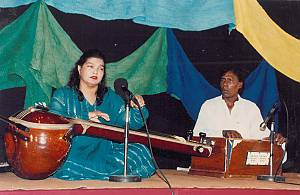
This sample is one of a number of didactic lesson plans relating different curricular subjects, intangible cultural heritage (ICH) elements and Education for Sustainable Development (ESD) principles, developed as part of the Learning with Intangible Heritage for a Sustainable Future: Guidelines for Educators in the Asia-Pacific Region. The lesson plans show how ICH elements can be incorporated into school subjects, as well as present innovative and creative pedagogical approaches to enhancing the quality of lessons and improving learning outcomes. Furthermore, they demonstrate that knowledge that students have to learn takes on meaning for them when they are able to relate
Read more
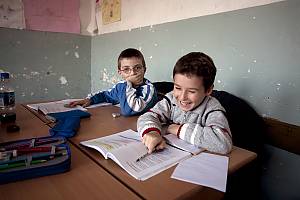
This article presents a case study of an educational programme designed and implemented by the Centre for Creativity in Education and Cultural Heritage in Israel. Arab and Jewish elementary school classes were paired with each other, allowing students to meet regularly over a period of two years to explore various intangible cultural heritage-related themes: play, song, dance, foodways, religion and family stories. In particular, the traditional game of hopscotch was used to enable cultural exchange among the children. They were first taught about folklore before exploring the many versions of hopscotch known by the students. Rather than agreeing upon ‘right’ a
Read more

AcademIK Connections is a modular learning series developed at Penn State’s Interinstitutional Center for Indigenous Knowledge (ICIK) that enables faculty to introduce indigenous perspectives into their university classes. The series is comprised of 12 video clips, featuring compelling stories of how indigenous knowledge can be leveraged to meet specific sustainable development goals in communities around the world. A lesson plan with learning objectives and key concepts accompanies each video. As described in the introduction to the series, AcademIK Connections draws upon traditional knowledge to challenge positivist paradigms that pervade academia, strives to diversify classroom discussion and encourages students to seek collaborations w
Read more

These instructions were developed in Palau as a pilot project, ultimately contributing to the development of the Learning with Intangible Heritage for a Sustainable Future: Guidelines for Educators in the Asia-Pacific Region. The guidelines aim to enable teachers to incorporate local elements of intangible cultural heritage (ICH) and principles of Education for Sustainable Development (ESD) into teaching and learning in schools. While the pilot project reflects the country’s context and needs, it can be used as a source of inspiration for similar activities in other places. The Palau guideline is structured around two essential points: teachers must have a solid u
Read more

This resource for students, together with the guide for teachers, forms the curricular backbone of the Hudhud Schools for Living Tradition programme. These schools, established in Ifugao Province, seek to enable the intergenerational transmission of the Hudhud narrative chants. The students’ guide provides background on the Hudhud, including its origin, themes, cultural significance, related customs and mode of performance. It then presents five sample chants, each from a different area of Ifugao, written in the respective local language. An English translation is provided for four of the chants. In addition, the guide includes lists of characters, places and vocabulary used i
Read more
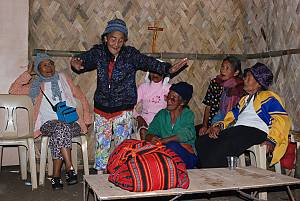
This resource for teachers, together with the guide for students, forms the curricular backbone of the Hudhud Schools for Living Tradition Programme. These schools, established in Ifugao Province, seek to enable the intergenerational transmission of the Hudhud narrative chants. Like the student’s guide, the teachers’ guide provides background on the Hudhud, including its origin, themes, cultural significance, related customs and mode of performance. It then presents 12 units, each with a clear learning objective, subjects of study, lesson plan and guide to evaluating students’ learning. Definitions of tangible and intangible heritage are also provided to support the teaching of the first unit
Read more
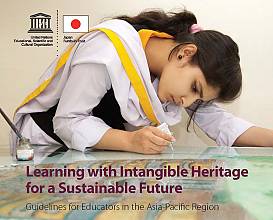
This guide was developed based on the results of four pilot projects conducted in the Asia-Pacific region (Pakistan, Palau, Viet Nam and Uzbekistan). It provides an understanding of intangible cultural heritage (ICH) and why it should be integrated into curricula, as well as explains how the strategic incorporation of ICH elements and Education for Sustainable Development (ESD) principles can enable learners to gain the knowledge and skills necessary to ensuring sustainable development in the future. This rich resource not only suggests steps for preparing and assessing lesson plans, but also provides examples of how the teaching and learning of ICH
Read more

A large collection of free lesson plans based on music traditions from around the world. Lesson plans can be explored via a map tool or by geographic region. Each lesson plan identifies suggested grade levels; associated countries, regions and culture groups; necessary instruments; learning objectives; assessment guidance; and optional extensions. Co-curricular areas are also identified, and for U.S.-based educators, links to the national standards. Teachers and students can listen to the accompanying musical recordings of culture bearers directly from each lesson plan’s webpage. The lesson plans can be downloaded as printable PDFs, and many include sheet music. They g
Read more
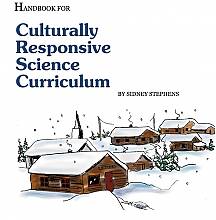
This handbook provides a conceptual and practical guide for curriculum developers, educators and educational assessors to integrate traditional knowledge into a standards-based science curriculum. Written specifically for use in Alaska (U.S.), the guide focuses its examples on Native Alaskan and Iñupiat knowledge, but its conceptual framework could be applied to any traditional knowledge system around the globe. The handbook is organized in four parts: cultural relevance, science standards, best practices and assessment. It also includes three appendices that offer an assessment rubric and two exemplary curricular units. Central to the handbook’s approach is the involvement of local culture bearers an
Read more
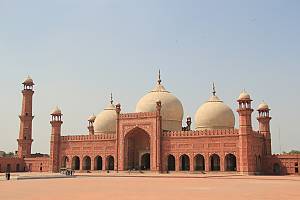
This sample is one of a number of didactic lesson plans relating different curricular subjects, intangible cultural heritage (ICH) elements and Education for Sustainable Development (ESD) principles, developed as part of the Learning with Intangible Heritage for a Sustainable Future: Guidelines for Educators in the Asia-Pacific Region. The lesson plans show how ICH elements can be incorporated into school subjects, as well as present innovative and creative pedagogical approaches to enhancing the quality of lessons and improving learning outcomes. Furthermore, they demonstrate that knowledge that students have to learn takes on meaning for them when they are able to relate
Read more
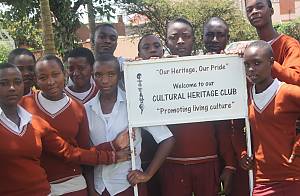
The Third Edition of the Heritage Education Tool Kit was produced by the Cross-Cultural Foundation of Uganda. It is a resource book to help teachers and patrons run Heritage Clubs in their secondary schools, and to help club leaders in and out of school.
The kit has been developed to engage young people in interactive discussions on the
value of cultural heritage in present times. It contains activities for youth to explore
issues related to personal and community values, and how they can play an active role
in preserving their communities’ cultural heritage. The Heritage Education Tool Kit is
designed t
Read more

The Hilali Toolkit offers an expanding set of online resources for educators interested in adapting existing curricula or developing new programmes that focus on safeguarding intangible cultural heritage. The toolkit intersects heritage, computing science and qualitative research methods to create learning activities that prepare students to develop ‘digitally mediated intangible cultural heritage (ICH) documentation’ with local communities. Educators can also easily use elements of the toolkit for other related curricular purposes. Originally designed and tested with Bedouin communities in Egypt, the toolkit is meant to be adapted in Middle East and Arab countries and beyond. Individual resources within the toolkit are
Read more

These instructions were developed in Viet Nam as a pilot project, ultimately contributing to the development of the Learning with Intangible Heritage for a Sustainable Future: Guidelines for Educators in the Asia-Pacific Region. The guidelines aim to enable teachers to incorporate local elements of intangible cultural heritage (ICH) and principles of Education for Sustainable Development (ESD) into teaching and learning in schools. While the pilot project reflects the country’s context and needs, it can be used as a source of inspiration for similar activities in other places. The Viet Nam instructions are designed for teachers of all subjects in primary a
Read more

The project ‘Learning with Intangible Cultural Heritage for a Sustainable Future’: a pilot project in four public and private schools in Lebanon, initiated by the Culture Unit at UNESCO-Beirut Office and the Lebanese National Commission for UNESCO in collaboration with the School Network of Saida and Neighboring Towns, aimed at integrating intangible cultural heritage in education as both a subject and a tool for learning and teaching in all relevant disciplines. It seeks to disseminate and promote
the principles of the 2003 UNESCO Convention for the Safeguarding of the Intangible Cultural Heritage as well as good safeguarding practices amongst the students
Read more

A joint undertaking between UNESCO Bangkok and the International Information and Networking Centre for Intangible Cultural Heritage (ICHCAP), the publication presents for the first time a systematic overview of the current state of ICH education in the region as well as general issues and trends. The report covers a wide variety of subjects and activities in which teachers integrate ICH, the types of ICH are the most popular for using in schools, and the most feasible entry points.
The publication also details the challenges that teachers face, the support that is currently available to them, and the imperative to make
Read more

2021
UNESCO welcomes young heritage professionals, students and heritage enthusiasts across Europe and beyond, to join the upcoming open Webinar on European Youth and Heritage being held on 23 April 2021 from 14:00 to 15:30 CET, and discover a thriving network of Cultural Heritage Messengers.
Read more

This kit was developed in Palau as a pilot project, ultimately contributing to the development of the Learning with Intangible Heritage for a Sustainable Future: Guidelines for Educators in the Asia-Pacific Region. The guidelines aim to enable teachers to incorporate local elements of intangible cultural heritage (ICH) and principles of Education for Sustainable Development (ESD) into teaching and learning in schools. While the pilot project reflects the country’s context and needs, it can be used as a source of inspiration for similar activities in other places. In addition to introductory modules on ICH and ESD, the Pakistan resource kit is d
Read more

This sample is one of a number of didactic lesson plans relating different curricular subjects, intangible cultural heritage (ICH) elements and Education for Sustainable Development (ESD) principles, developed as part of the Learning with Intangible Heritage for a Sustainable Future: Guidelines for Educators in the Asia-Pacific Region. The lesson plans show how ICH elements can be incorporated into school subjects, as well as present innovative and creative pedagogical approaches to enhancing the quality of lessons and improving learning outcomes. Furthermore, they demonstrate that knowledge that students have to learn takes on meaning for them when they are able to relate
Read more

This doctoral thesis details research into Aboriginal and Torres Strait Islander students’ cultural learning experiences in six public schools across New South Wales, Australia. The study relates the students’ perspectives to broader educational and institutional forces that impact their experiences. In addition to her findings, the author presents a series of eight practical recommendations for New South Wales school administrators, teachers, teachers in training, and teacher-training programs. Several proposals underscore the integral importance of intangible cultural heritage transmission to effective cultural learning programmes for Aboriginal and Torres Strait Islander students.
Read more

This sample is one of a number of didactic lesson plans relating different curricular subjects, intangible cultural heritage (ICH) elements and Education for Sustainable Development (ESD) principles, developed as part of the Learning with Intangible Heritage for a Sustainable Future: Guidelines for Educators in the Asia-Pacific Region. The lesson plans show how ICH elements can be incorporated into school subjects, as well as present innovative and creative pedagogical approaches to enhancing the quality of lessons and improving learning outcomes. Furthermore, they demonstrate that knowledge that students have to learn takes on meaning for them when they are able to relate
Read more




La educación puede desempeñar un valioso papel en la salvaguardia del patrimonio cultural inmaterial, especialmente hoy en día, cuando la transmisión continuada de muchos sistemas y prácticas de conocimiento está amenazada en África. Los modos y métodos de transmisión reconocidos por las comunidades pueden ser ›››





El Líbano participó en el proyecto «Patrimonio vivo del Mediterráneo» de 2009 a 2012, que pretendía capacitar a los países mediterráneos para desarrollar proyectos de salvaguardia del patrimonio cultural inmaterial (PCI) al aplicar la Convención de la UNESCO para la Salvaguardia del Patrimonio Cultural Inmaterial ›››

La Agenda 2030 para el Desarrollo Sostenible y la Agenda 2063 de la Unión Africana proporcionan a África Meridional planes de acción fundamentales para hacer frente a los retos actuales del cambio climático, el dramático crecimiento de la población, los altos niveles de pobreza, la degradación del medio ambiente y el aumento de la pobreza. ›››


Una de las prioridades en el ámbito del PCI para 2018-2021 es la «Salvaguardia del patrimonio cultural inmaterial en la educación formal y no formal». Como primera respuesta a esta prioridad, la región de Asia Central elaboró una encuesta piloto para identificar los vínculos que ya existían y los puntos en los que se podrían desarrollar más las oportunidades de creación de redes entre los programas de EFTP para reforzar la transmisión del PCI. ›››



El río Pirá Paraná, situado en la provincia del Vaupés, en el sureste de Colombia, alberga los lugares sagrados de los chamanes jaguares de Yuruparí. Inscritos en la Lista Representativa del Patrimonio Cultural Inmaterial de la Humanidad en 2011, sus conocimientos tradicionales ›››

La toma de conciencia del escaso número de hablantes de náhuat y del declive de la transmisión intergeneracional en Santo Domingo de Guzmán (El Salvador) llevó a la puesta en marcha de un proyecto que pretende documentar, tanto en náhuat como en español, las tradiciones orales de la región. ›››


El pueblo lala del distrito de Luano emigró en el siglo XVIII desde la actual República Democrática del Congo hasta sus actuales asentamientos en Zambia. Sus expresiones orales, en particular ›››

En 2012, el jefe supremo Chikulamayembe (Tumbuka), el jefe supremo Kyungu (Ngonde) y la autoridad tradicional Chadza (Chewa) solicitaron la ayuda de la Comisión Nacional de Malawi ›››

La Guía para profesores de educación indígena es el resultado de la colaboración entre el Sindicato Nacional de Trabajadores de la Educación (SNTE) y la oficina de la UNESCO en México. El proyecto se llevó a cabo mediante un proceso ›››


Este proyecto piloto se llevó a cabo en diecisiete escuelas de cuatro países: Pakistán, Palau, Uzbekistán y Vietnam. Su objetivo era desarrollar un marco pedagógico para que los educadores utilizaran el patrimonio cultural inmaterial para concienciar sobre ›››



El paisaje cultural de Koutammakou, en el noreste de Togo, es famoso por sus casas con torres de barro llamadas «takienta». La tierra está impregnada de significado para los habitantes de Batammariba, cuyos rituales, creencias, artesanía, canciones, deportes ›››

Sekolah Adat Samabue (Samabue Indigenous School o SAS) es una escuela indígena autofinanciada y gestionada por voluntarios del pueblo indígena Dayak Kanayatn de Menjalin, en la provincia de Kalimantan Occidental, Indonesia. La escuela se fundó en febrero de 2016, después de que la joven ›››

a Oficina de la UNESCO en El Cairo ha elaborado un kit de herramientas educativas para salvaguardar el patrimonio vivo. Ha sido diseñado como un kit de herramientas educativas prácticas, portátiles e interactivas para formadores y profesores con el fin de integrar el patrimonio cultural inmaterial en la educación en Egipto. ›››

Entre 2016 y 2017, la Oficina de la UNESCO en Ammán llevó a cabo un inventario piloto del patrimonio cultural inmaterial en Mafraq basado en la comunidad. Esta iniciativa puso de manifiesto la necesidad de desarrollar herramientas prácticas que pudieran utilizarse para apoyar la salvaguardia en el país. ›››

El kit de herramientas Heritage in a Box es una versión revisada del kit UNESCO World Heritage in Young Hands adaptado por la Oficina de la UNESCO en Pekín y sus colaboradores en el contexto mongol del sitio del Patrimonio Mundial del paisaje cultural del valle del Orkhon. ›››

La provincia de La Guajira, en la costa norte del Caribe colombiano, alberga el territorio sagrado ancestral del pueblo indígena wayuu. Los wayuu se reparten entre la provincia de La Guajira, en Colombia, y el estado de Zulia, en Venezuela, y son la mayor comunidad indígena de ambos países. ›››